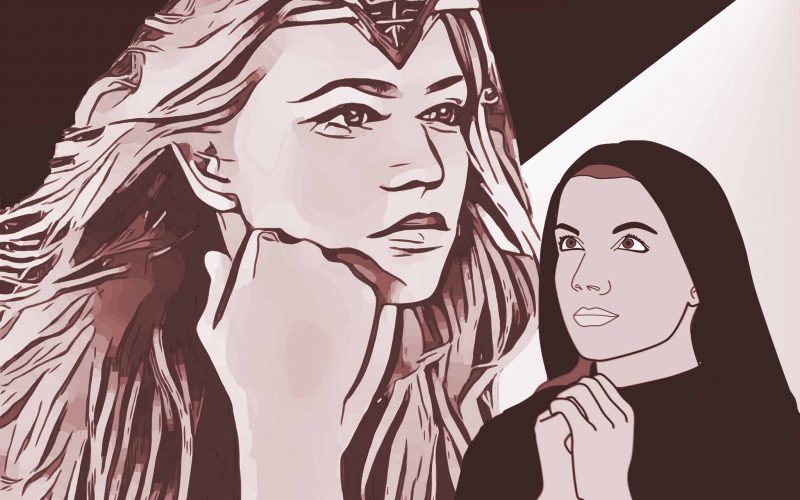Wonder Woman wields her Lasso of Truth, using it to make others tell the truth or obey her, while the Bene Gesserit in Dune engage their abilities in the Voice and Truthsaying, using them to command others and tell whether they’re lying. Both come from all-women communities and hope to save and/or improve humanity through their extraordinary skills as strong and capable women. Might Frank Herbert have modeled the Bene Gesserit in part on William Moulton Marston’s popular comic book superhero?
A possible connection between Wonder Woman and the Bene Gesserit first arose during my research for my article on their skills in the Voice and Truthsaying. Interested in finding out more about the development of truth and lie detection, I looked at Geoffrey C. Bunn’s The Truth Machine: A Social History of the Lie Detector.
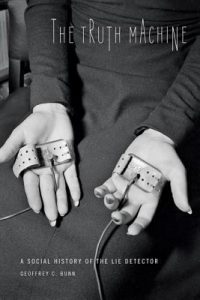
by Geoffrey C. Bunn
It shows that the origins of the now well-known lie detector machine are enmeshed in a tangle of competing narratives. Bunn writes that “It is difficult to actually pinpoint an exact ‘founding moment’ when the lie detector was supposedly invented because a lie detector is not merely a ‘machine’; it is a complex array of techniques, concepts, procedures, and symbols”. [1] Nevertheless, Bunn concludes that the Harvard psychologist Marston was one of the most influential people responsible for the increasing use of the lie detector in the U.S. before WWII, and that he created Wonder Woman as a way to embody his ideas about society and psychology. [1]
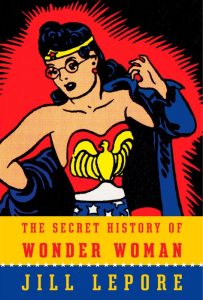
Next I turned to Jill Lepore’s The Secret History of Wonder Woman for more information on Marston’s life and his development of Wonder Woman. In this book of cultural history, Lepore weaves together her meticulous research on the creation of the most popular female comic book superhero, Wonder Woman, to demonstrate that this “Amazonian princess” is “the missing link in a chain of events that begins with the woman suffrage campaigns of the 1910s and ends with the troubled place of feminism fully a century later”. [2] She explores the life of Marston and the women he loved and lived with, all of whom contributed in some parts to the development and writing of Wonder Woman. She also draws connections between their lives, his experiments with lie detector tests, and Margaret Sanger’s birth control movement. Lepore’s discoveries reveal that the contexts of the stories of Wonder Woman are so much more complicated than they may look on the surface.
Although it cannot be proved what, if any, degree of influence Marston’s work had on Herbert and his science fiction, I have noted several parallels between Wonder Woman and the Bene Gesserit that are interesting to consider.
Strength of Women
Wonder Woman first appeared in All-Star Comics #8 in the fall of 1941, just before the United States’ entry into World War II. One theme in her comics was the strength of women. With his first script, psychologist Marston told his editor that the project could only continue if it were allowed to be about the great movement underway in “the growth in the power of women”. [2] Marston chose an artist with ties to the suffrage and feminist movements, and was influenced by his lovers (including his spouse, Elizabeth Holloway, and Olive Byrne) who were involved in or connected to feminist movements for suffrage and birth control. A press release he wrote in 1942 announced that
“The only hope for civilization is the greater freedom, development and equality of women in all fields of human activity”
and that Wonder Woman was intended
“to set up a standard among children and young people of strong, free, courageous womanhood; and to combat the idea that women are inferior to men, and to inspire girls to self-confidence and achievement in athletics, occupations and professions monopolized by men”. [2]
The Bene Gesserit appeared as members of an all-female organization in the novel Dune in 1965 (an earlier version of which had been serialized in 1963-1964 in Analog magazine). They demonstrate the strength of women in a variety of ways (see previous articles on their many skills), though they often do so subtly. Herbert was influenced by the strong presence of women in his life, notably his mother and her ten sisters who insisted he be raised Catholic, and his spouse Beverly. Like Marston, he was interested in the ideas of psychology and how they could play out in a fictional setting.
Bondage
Another theme in Wonder Woman was the bondage of women. [2] The images of women being tied up are derived in part from “feminist and suffrage cartoons and protests from the 1910s—in which women are chained and roped and gagged, as an allegorical representation of their lack of rights and liberties”. [2] But they also stemmed from Marston’s beliefs as a psychologist about submission and what women liked. [2] Marston insisted that Wonder Woman needed to be chained up or tied up so she could free herself, thus gaining emancipation for herself. [2]
A parallel in Dune is when Jessica is gagged and bound after being captured by the Harkonnen, and has to work with Paul, also bound, to subdue the two guards taking them in an ornithopter to die in the desert. She uses her wiles to manipulate them, while Paul assists by using the Voice to make them remove her gag. Later he holds a knife in his teeth while she saws her bonds, and then she uses the knife to cut his, making their escape from bondage a joint effort. Looking more broadly at the Bene Gesserit’s semi-Taoist philosophy—“That which submits, rules”, it contains echoes of Marston’s “basic idea of women fighting male dominance, cruelty, savagery and war-making with love control backed by force” and his desire to show young people that “submitting to a loving superior or deity” is preferable to submitting to the bad guys. [2]
Lie Detection
One of Marston’s key research interests was the study of the detection of deception. Through Wonder Woman, he could incorporate his work, which dated back to his junior year of college and 1921 doctoral dissertation in psychology at Harvard. [2] He created an experiment to use blood pressure readings to detect deception and experimented on psychology graduate students. [2]
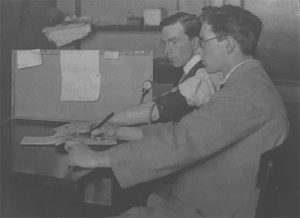
Newspapers referred to him as the “Lie Meter Inventor” in 1923, and he published a book called The Lie Detector Test in 1938 to help solidify his claim to the invention, although the person who ended up securing the patent for a polygraph machine (in 1931) was John Larson, a police detective with a PhD who apparently had read one of Marston’s papers and applied it to police interrogation. [2] In a comic book issue in March 1942, Wonder Woman disguised as Diana Prince administers a lie detector test (see image).

In an issue a few months later in June, she receives a magic golden lasso from her mother, Hippolyta, who tells her that it will make others obey her. Although this usage may track more with Marston’s ideas about femininity, submission, and love than lie detection, Wonder Woman did use the lasso to demand that people tell her the truth and thereby gain valuable intelligence. [3]
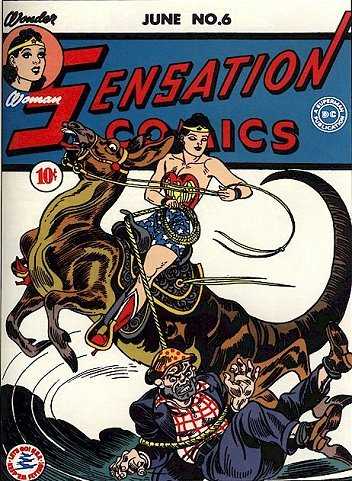
The 1970s Wonder Woman television series helped popularize the idea that she used the lasso to force people to tell her the truth. Eventually, it was explicitly named the Lasso of Truth, and it has kept this designation. [3] As explained in Wonder Woman and Philosophy: The Amazonian Mystique, while the “original lasso was capable of compelling action, which included, but was not limited to, truth-telling,” the “new version of the lasso is capable of compelling knowledge rather than action, that is, of making an individual bound by it face the truth — often a deflected, forgotten, or sublimated truth about themselves”. [4] Regardless of whether Wonder Woman was using a realistic lie detector to root out falsehoods, or a magical lasso to subdue enemies and make way for the truth in order to help justice prevail, these align with Marston’s original interest in truth-telling and lie detection.
Women holding the power to command obedience, compel truth, and detect lies also feature in Dune. Reverend Mother Mohiam serves as the official Truthsayer of the Emperor. As such, she can determine whether someone believes what they are saying to be true, an ability that is linked to the Bene Gesserit’s extraordinary abilities in perception of minute details and understanding of the human voice. She is also skilled in using the Voice, which she does to command Paul when administering the test of humanness at the opening of the novel. Thus, what appear to be magical abilities for Wonder Woman, albeit based on Marston’s research, appear to be more realistic abilities for the Bene Gesserit. This reflects Herbert’s own research in language, linguistics, and psychology.
Herbert also had personal experience with a lie detector in his household. According to Herbert’s son Brian, Herbert learned about lie detectors from his own father, who was a police officer. Herbert later obtained a WWII U.S. Navy lie detector that he used on his children when he suspected they were lying: “If anything came up, such as an item missing from his desk or questions about where I had been after school, he would say, in a clipped voice, ‘I’m putting you on the lie detector. Let’s go in the other room'”. [5] Brian draws a connection between this terrifying real-world ordeal and the concepts of the Truthsayers and the black box of pain in Dune.
Women’s History
The early comics of Wonder Woman actually promoted the lives of real-world trail-blazing women in addition to showcasing this new female superhero. Issues included a four-page centerfold called “Wonder Women of History” that contained a biography of a heroic woman. [2] Before the surge of interest in women’s studies programs in the second-wave women’s movement, Wonder Woman was educating young girls and boys about women’s history between the pages of their comics. Unfortunately, after Marston’s death, the comic was taken over by an anti-feminist man who turned Wonder Woman into his vision of a postwar woman: a babysitter, fashion model, movie star, and wanna-be wife, and replaced the educational insert with a series about weddings. [2][6] However, she was reclaimed and appeared on the front cover of Ms. magazine in 1972 with the tagline “Wonder Woman for President”, which “forever sealed her status as a symbol of female empowerment”. [6] For women who had grown up with the 1940s version of Wonder Woman, there was a clear feminist message worth redeeming. [2]
Women’s history is an important part of the Bene Gesserit’s world as well, though it is not dwelt on much in the first book in the Dune series. They gain direct access to the memories of their female ancestors through Other Memory after enduring the spice agony. We see Jessica receiving an avalanche of the dying Reverend Mother Ramallo’s ancestral female memories as she takes the Water of Life and psychically bonds with this Fremen religious leader. Thus, rather than needing to be educated about women from the past, she and other Bene Gesserit can tap into their experiences whenever they desire.
All-Women Society
Both Wonder Woman and members of the Bene Gesserit come from all-women communities. Wonder Woman comes from Paradise Island, a land based on Amazonian legends and early feminist utopias like Charlotte Perkins Gilman’s 1915 novel Herland. [2]
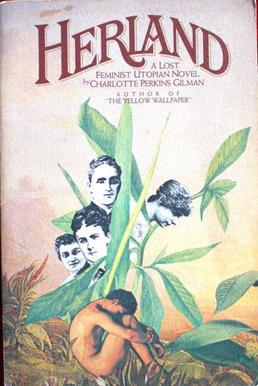
In this novel, in an all-women society hidden away from the world, women practice voluntary motherhood via parthenogenesis. In Marston’s view, Paradise Island is where women who had been made captive by Greek men were helped by the Goddess of Love to break their chains, and these “New Women thus freed and strengthened by supporting themselves (on Paradise Island) developed enormous physical and mental power. But they have to use it for other people’s benefit or they go back to chains, and weakness”. [2]
The Bene Gesserit also have an all-women space in their organization and in the schools they run to train and educate girls, and they too empower women to be able to control their reproductive capacity. Such spaces provide a place for women to form their own hierarchies and rules and chart their own path while still being able to leave and engage in regular society.
Saving/Improving Humanity
Lastly, Wonder Woman’s goal of saving the world may be more obviously altruistic than that of the Bene Gesserit, but these women also have at least some motives that involve saving humanity from itself and improving its opportunity to enjoy freedom. After surviving Reverend Mother Mohiam’s test of humanness, Paul asks her “Why do you test for humans?” and she answers, “To set you free. […] Once men turned their thinking over to machines in the hope that this would set them free. But that only permitted other men with machines to enslave them.” [7] The Bene Gesserit seek after people who will not be ruled by their instincts as animals are, in order to prevent humanity from following a path toward enslavement by technology. As in some real-world religions, they maintain that they “exist only to serve” even while using their roles to achieve this goal, among others, and influence the politics of the Imperium. [7]
Therefore, while on the surface Wonder Woman and the Bene Gesserit may not seem to have much in common—especially given that the former’s strength and power are much more obviously on display throughout the media—there are actually several similarities worth noting in their characterization and development.
References:
[1] Bunn, Geoffrey C. The Truth Machine: A Social History of the Lie Detector. Johns Hopkins University Press, 2012. Pages 124, 172.
[2] Lepore, Jill. The Secret History of Wonder Woman. Alfred A. Kopf, 2014. Pages xiii, 35-36, 86-87, 188-189, 233-234, 236-237, 243; inserts 1, 3, 4, 6, 10, 14, 16.
[3] Cronin, Brian. “When Did Wonder Woman’s Lasso Become a Weapon of TRUTH?” CBR, May 30, 2017.
[4] Johnson-Moxley, Melanie. “Bound to Face the Truth: The Ethics of Using Wonder Woman’s Lasso.” In Wonder Woman and Philosophy: The Amazonian Mystique, edited by Jacob M. Held, John Wiley & Sons, 2017.
[5] Herbert, Brian. Dreamer of Dune: The Biography of Frank Herbert. Tom Doherty Associates, 2003.
[6] Stuller, Jennifer K. Ink-Stained Amazons and Cinematic Warriors: Superwomen in Modern Mythology. I.B. Tauris & Co, 2010. Page 23, 39.
[7] Herbert, Frank. Dune. 1965. Reprint Berkley Books, 1984. Pages 11, 154.
Image Credits:

